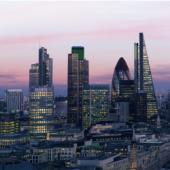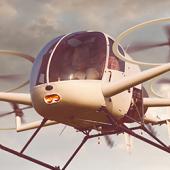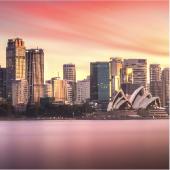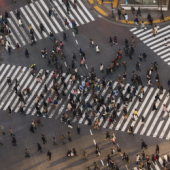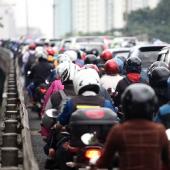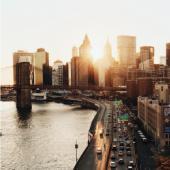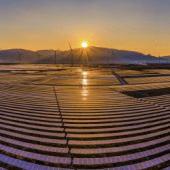Kornik: Cities all over the world are becoming more digitized and connected, and all this data can do unbelievable, previously unthinkable things. And they’re getting smarter every day. What’s the potential for smart cities?
Blatman: Everything seems to be making use of big data and cities are no exception. When used for the right reasons, all this data can help make cities run more efficiently, be more environmentally sound and offer better services to their citizens. For example, transportation usually heads the list of smart city applications—everything from Ubers and Lyfts to improving traffic flow through sensors, to helping mass transit run more efficiently for riders and operators. Sensors and monitors are also used to improve water and sewer service as well as to keep track of air pollution. And big data can help in allocating city services and resources to areas that need them most. But there's a downside, too. Google planned to build its own smart city in Toronto starting in 2017, but the level of surveillance and data gathering was so invasive and intrusive that public outcry led the project to be downsized from 190 to 12 acres. Google pulled the plug on the entire project in 2020.
Kornik: A big part of smart cities and all that data comes from cameras located all over cities. In this video, you focus on San Diego’s smart streetlights that came under fire and were ultimately disabled after the ACLU and other groups cited privacy concerns. What went wrong?
Blatman: San Diego fell victim to chasing the shiny new object of being a "smart city" without really knowing what they were getting into—the notion that just capturing reams of data would automatically make a measurable impact in improving the lives of its citizens. When it came time in 2016 to update its streetlights with more efficient LED bulbs, the city decided that 3,200 of 14,000 new poles would not just house streetlights but also a whole array of sensors that were promised to provide timely information on traffic flow, parking availability and environmental conditions, as well as video and sound recordings. San Diego was so excited about this new technology that they used their smart streetlights as an economic development pitch, touting the city as being in the forefront of the smart city movement. So, what happened? Most of the sensors didn't work and when they did, the city found the data not very helpful and often inaccurate. City officials found out they could easily buy better data from various tech companies. The only thing that really worked were the cameras. Ironically, San Diego police were not even aware of the video recording capability until more than a year after their installation, after a high-profile homicide occurred within range of the cameras. When it was suggested the camera recordings could help in the investigation, it touched off a firestorm because people began questioning what kind of surveillance system the city had installed. After over a year of protests, meetings and negotiations, the city froze the use of the cameras until rules and regulations could be drafted and approved by the city council. Final approval is still pending.
Kornik: San Diego is such an interesting case, and really, I think the world is watching. Ultimately, when it comes to privacy, where’s the line? When does security become surveillance?
Blatman: How far to go with privacy protections is a difficult question because there are no right answers. For every group in San Diego and elsewhere concerned about too much surveillance, there are others in cities such as Atlanta, Baltimore and St. Louis that are pleading for more cameras to deal with rising crime. A separate question is, do cameras really reduce crime or do they just shift it to other places as some studies have shown? The technology genie is out of the bottle whether we like it or not—and it's not just cameras. One Ohio company was using high-powered military spyware it developed for aerial surveillance in Baltimore. Apart from privacy issues, even that didn't reduce crime, so Baltimore canceled the program. And more recently, St. Louis declined to use the same system. Then there are the systems in use outside of the United States. There are at least 200 million AI cameras in use throughout China. The government is reportedly building a system where facial recognition can identify any of the country’s 1.4 billion citizens within three seconds. A 2021 study by Surfshark, a data and VPN service company based in the British Virgin Islands, showed that Beijing and Shanghai had the highest number of surveillance cameras of any city in the world, with over one million cameras each. London is third with about 628,000 cameras in use. By contrast, Sydney has about 60,000. The most in the U.S. is New York with about 31,500. What we need to do is make sure the rules of use are clear. Who sees the data, who uses the data and for what purpose? Who owns the data and for how long is the information stored? The solution for many cities, led by Oakland and San Francisco and now being adopted by San Diego, is for a broad group of tech experts, city officials, community leaders and the police to sit down together and draft rules governing the use of these technologies. I think we’ll see a lot more of that in the future.










